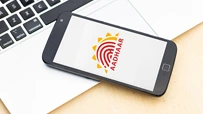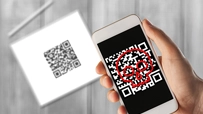What is a SWIFT Code?
January 31, 2025

When transferring money across borders, understanding SWIFT codes is essential. Over 11,000 financial institutions in more than 200 countries use SWIFT codes to facilitate secure and efficient communication for international transactions. According to the Society for Worldwide Interbank Financial Telecommunication (SWIFT), its network processes over 42 million messages daily, highlighting its critical role in the global banking system.
What is a SWIFT Code?
SWIFT stands for Society for Worldwide Interbank Financial Telecommunications. Also known as Bank Identifier Code (BIC), it is a unique alphanumeric identifier assigned to a bank. These codes are globally recognised and standardised under the International Organization for Standardization (ISO) 9362.
A SWIFT code consists of 8 to 11 characters:
- First 4 characters: Represent the bank code
- Next 2 characters: Denote the country code (e.g., IN for India).
- Following 2 characters: Indicate the city code (e.g., BB for Mumbai).
- Optional last 3 characters: Specify the branch code (e.g., XXX for the head office).
How Does a SWIFT Code Work?
SWIFT codes function as a messaging system, enabling banks and financial institutions to communicate securely about cross-border transactions. Here’s how it works:
- Initiation: The sender provides the recipient’s bank details, including the SWIFT code.
- Message Transmission: The sender’s bank sends an encrypted message via the SWIFT network to the recipient’s bank, detailing the transaction.
- Processing: The recipient’s bank verifies the message, processes the payment, and credits the funds to the recipient’s account.
Importance of SWIFT Codes in Banking
- Accuracy: SWIFT codes ensure that funds are transferred to the correct financial institution.
- Security: Advanced encryption protects sensitive transaction data.
- Global Reach: SWIFT’s extensive network connects financial institutions worldwide.
- Efficiency: Automates and streamlines the international fund transfer process.
- Compliance: Ensures adherence to international regulations and standards.
SWIFT vs. IBAN: What’s the Difference?
While SWIFT codes identify financial institutions, the International Bank Account Number (IBAN) specifies individual accounts in international transactions. Both are often required for cross-border transfers but serve distinct purposes:
| Feature | SWIFT Code | IBAN |
| Purpose | Identifies the bank | Identifies the account |
| Length | 8-11 characters | Up to 34 characters |
| Scope | Institution-level | Account-level |
Key Benefits of Using SWIFT Codes for Cross-Border Transactions
- Simplified Transactions: Eliminates manual errors in communication.
- Secure Transfers: Protects against unauthorised access and fraud.
- Cost-Effective: Reduces administrative and operational costs.
- Rapid Processing: Ensures timely fund transfers.
- Transparency: Provides detailed transaction tracking.
Common Use Cases for SWIFT Codes
- International Money Transfers: Sending funds to a recipient in another country.
- Trade Finance: Facilitating global trade transactions.
- Foreign Exchange: Settling currency conversion transactions.
- Corporate Banking: Managing cross-border payments for businesses.
Final Thoughts
SWIFT codes are indispensable in the modern banking landscape, enabling seamless and secure cross-border transactions. By providing a standardized communication framework, SWIFT codes bridge the gap between financial institutions worldwide, ensuring efficiency and accuracy.
Enjoy easy banking with Ujjivan Small Finance Bank. Save more with our high-interest Savings Account and Deposit products. Need cash for your business or personal needs? Apply for MSME Loans or Micro Loans with us – we offer competitive rates and quick disbursal. We also offer vehicle loans and home loans tailored for your unique requirements. Experience a smooth banking journey with Ujjivan SFB!
Disclaimer:
The contents herein are only for informational purposes and generic in nature. The content does not amount to an offer, invitation or solicitation of any kind to buy or sell, and are not intended to create any legal rights or obligations. This information is subject to updation, completion, amendment and verification without notice. The contents herein are also subject to other product-specific terms and conditions, as well as any applicable third-party terms and conditions, for which Ujjivan Small Finance Bank assumes no responsibility or liability.
Nothing contained herein is intended to constitute financial, investment, legal, tax, or any other professional advice or opinion. Please obtain professional advice before making investment or any other decisions. Any investment decisions that may be made by the you shall be at your own sole discretion, independent analysis and evaluation of the risks involved. The use of any information set out in this document is entirely at the user’s own risk. Ujjivan Small Finance Bank Limited makes no representation or warranty, express or implied, as to the accuracy and completeness for any information herein. The Bank disclaims any and all liability for any loss or damage (direct, indirect, consequential, or otherwise) incurred by you due to use of or due to investment, product application decisions made by you on the basis of the contents herein. While the information is prepared in good faith from sources deemed reliable (including public sources), the Bank disclaims any liability with respect to accuracy of information or any error or omission or any loss or damage incurred by anyone in reliance on the contents herein, in any manner whatsoever.
To know more about Ujjivan Small Finance Bank Products Visit:"https://www.ujjivansfb.in"
All intellectual property rights, including copyrights, trademarks, and other proprietary rights, pertaining to the content and materials displayed herein, belong
to Ujjivan Small Finance Bank Limited or its licensors. Unauthorised use or misuse of any intellectual property, or other content displayed herein is strictly prohibited and the same is not intended for distribution to, or use by, any person in any jurisdiction where such distribution or use would (by reason of that person’s nationality, residence or otherwise) be contrary to law or registration or would subject Ujjivan Small Finance Bank Limited or its affiliates to any licensing or registration requirements.
FAQs
1. What is a SWIFT code used for?
SWIFT codes are used to identify financial institutions in international transactions, ensuring funds reach the correct bank.
2. How do I find my bank’s SWIFT code?
You can find your bank’s SWIFT code on your bank statement, the bank’s website, or by contacting customer service.
3. Are SWIFT codes the same as IFSC codes?
No, SWIFT codes are for international transactions, while IFSC codes are used for domestic transfers within India.
4. Can a SWIFT code be reused?
Yes, a SWIFT code is unique to a bank branch and can be reused for multiple transactions.
5. What happens if I enter the wrong SWIFT code?
Funds may be delayed, returned, or sent to the wrong institution. Always double-check the code before initiating a transfer.
6. Is a SWIFT code required for receiving money?
Yes, the recipient’s bank SWIFT code is essential for international transfers.
7. What are the charges for using SWIFT?
Banks may levy charges for outgoing and incoming SWIFT transactions, varying by institution and amount.
8. How long does a SWIFT transfer take?
SWIFT transfers typically take 1-5 business days, depending on the banks involved.
9. Can individuals obtain a SWIFT code?
No, SWIFT codes are assigned to financial institutions, not individuals.
10. Are SWIFT codes universal?
Yes, SWIFT codes are globally standardized, making them universally recognizable for international banking.
Latest Blogs

Dussehra 2025: How to Win Your Financial Battles with Smart Saving
Dussehra 2025 (also known as Vijayadashami) falls on Thursday, October 2, 2025.

eSIM Scam in India: I4C Warns Mobile Users About Rising Fraud – How to Stay Safe
The Indian Cybercrime Coordination Centre (I4C), a wing of the Ministry of Home Affairs, issued a strong warning to mobile users about the rapid increase in eSIM fraud in India.

How to Link PAN with Aadhaar: Step-by-Step Guide & Consequences of Not Linking
Linking your Permanent Account Number (PAN) with your Aadhaar is no longer just a best practice.

Annual Information Statement (AIS): A Complete Guide for Stress-Free ITR Filing
India’s tax season is in its final stretch.

ITR-1 (Sahaj) Restrictions: Income Sources Not Allowed & Filing Rules
With just a few days left before the 15 September 2025 deadline for filing Income Tax Returns (ITRs) for Assessment Year (AY) 2025-26, many taxpayers are rushing to submit their forms online.





